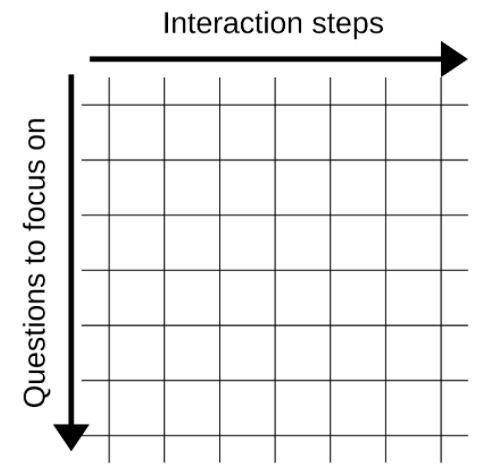

This article is an excerpt from the Shortform book guide to "Raving Fans" by Ken Blanchard and Sheldon Bowles. Shortform has the world's best summaries and analyses of books you should be reading.
Like this article? Sign up for a free trial here .
How can you turn casual buyers into loyal customers? What does customer service have to do with loyalty?
The book Raving Fans by Ken Blanchard and Sheldon Bowles is all about the importance of exceptional customer service when it comes to building a customer base. The business fable outlines the importance of going beyond what is “satisfactory” so customers will keep coming back.
Here’s how to create loyal customers in five steps, according to Raving Fans.
Happy Customers Are Core to Your Success
If you want to know how to create loyal customers, first you should understand why customer service is so important. According to the authors, whatever work you do, the people you serve are central to your success. Happy customers can share positive reviews with thousands of people. Likewise, disgruntled customers can write terrible reviews, can damage your reputation, and won’t hesitate to abandon you for your competitors. With one click, your customers have the power to make or break you.
| The world of business has rapidly evolved since 1993 when Raving Fans was published. Today, the marketplace is saturated with competitors for every type of product and service, and businesses now understand that they have to pay as much attention to their customer experience strategies as they do to their product and service offerings. Further, consumers now have more buying power and higher expectations than they did when Raving Fans was originally released. Consequently, some modern readers have argued that the principles in the book are outdated since consumers do not have to put up with poor service since they can easily move to a competitor. However, the principles covered in Raving Fans may be more significant today than they were in 1993—due to the increase in competition and consumer buying power, businesses have to work harder to impress customers and stay ahead of the competition. Therefore, creating “Raving Fans” is essential to business survival. |
“Satisfied” Customers Won’t Stick Around
Blanchard and Bowles argue that there’s a clear distinction between satisfying your customers and exceeding the expectations of your customers. If you merely seek to satisfy your customers, they’ll only stay with you as long as you’re not worse than the competition. The authors argue that, in contrast, happy customers are likely to:
- Become loyal customers and offer a reliable source of revenue
- Promote your business by becoming brand advocates and help grow your customer base
- Offer feedback and a deeper understanding of their motivations, which will help you to create better products and services
- Test or become early adopters of your latest products and services
According to the authors, businesses that successfully implement customer service experience strategies achieve higher customer retention rates and increased revenues.
| Businesses tend to spend more on acquiring new customers than they do on investing in keeping the ones they already have. However, these customer acquisition and retention marketing statistics highlight how costly this approach can be: -It can cost five times more to acquire a new customer than it can to retain an existing customer. -The success rate for selling to new customers is 5-20%, whereas the success rate for selling to existing customers is 60-70%. -A 5% increase in customer retention can yield higher profits ranging from 25-95%. Clearly, it pays more to invest in making your existing customers happy than it does to acquire new customers. |
In this guide, we’ll explore the principles of outstanding customer service in greater detail and make them actionable with a range of exercises to help you transform your customers into enthusiastic fans of your product and company. We’ve deconstructed the book’s three stages into five concrete steps to create an excellent customer service experience:
- Step 1: Define Your Ideal Customer Service Experience
- Step 2: Discover Your Customers’ Ideal Service Experience
- Step 3: Integrate Your Vision With Their Needs
- Step 4: Build Effective Systems to Ensure Consistency
- Step 5: Exceed Customer Expectations
Step 1: Define Your Ideal Customer Service Experience
The first step is to envision the best possible experience that your customers can have with your business. Blanchard and Bowles argue that customer experience is the impression your customers have of your business as a whole. This means that if they have a bad experience during one stage of their interactions with you, their judgment of you will go down regardless of how excellent the rest of your service was. Therefore, a great customer experience comes from providing excellence at every stage of contact.
| According to one customer loyalty report, 63% of consumers confirmed they’d consider moving to a competitor after a single bad experience. However, the impact of a single negative customer experience doesn’t simply end with the loss of current revenue. Consumers are quick to vent their frustrations in public ways, and these complaints rarely go unnoticed. Consider these statistics: -93% of consumers base their decisions on online reviews. -80% of consumers won’t buy from businesses with negative reviews. Therefore, a single negative customer experience doesn’t just result in the loss of existing customers but damages your reputation, and it has detrimental effects on your ability to acquire new customers. |
Shortform Exclusive: The Customer Journey Map
Blanchard and Bowles don’t offer practical steps to define your customer service experience vision. To focus your vision, consider creating a customer journey map that details the actions your customers take during their entire engagement with your business.
First, create a chart and list each interaction step horizontally on your first row. This is an example of a few of the journey steps for a small offline store:
| Step 1: Customer arrives at your store | Step 2: Customer searches for a specific product | Possible Step: Customer seeks product information | Step 3: Customer purchases the product |
Next, list these questions down the first column of your chart:
- What potential problems or hurdles can I eliminate?
- How can I make the process easier or more intuitive for them?
- How can I engage with them so they feel valued?
- How can I differentiate my customer experience service from what my competitors offer?
- What can I provide here to really impress my customers?
You’ll end up with a chart that looks like this:

Use the chart you’ve created to brainstorm ideas on how you can provide excellent service throughout each interaction. For now, just focus on your ideal experience—don’t worry about what you can realistically achieve (we’ll cover that in Step 3).
Step 2: Discover Your Customers’ Ideal Service Experience
After defining excellent customer service in Step 1, you may assume that you have a clear understanding of what your customers want. But you won’t know for sure until you ask them, which is Step 2.
When the authors talk about your customers, they’re not just talking about the people who buy your products or services. Even if you’re a freelancer or sole owner, your business has many internal and external customers or stakeholders.
External customers are the people who see your business as a provider of something they buy. They’re the people that you create your products and services for and bring in revenue.
Internal customers participate in your business and are invested in your success. They include your team members, departments within your business, suppliers, and manufacturers.
According to the authors, internal customers can be anyone businesses interact with to fulfill their responsibilities. In the case of a restaurant, the external customers are the patrons sitting at the table, while the internal customers include the staff working in the restaurant, as well as the individual suppliers they rely on to provide the ingredients. Both internal and external customers are essential to the success of your business.
(Shortform note: Some experts disagree with the authors’ suggestion that all parties invested in the success of your business should be classified as internal stakeholders. Further, many experts classify each stakeholder according to how much they contribute to your business, and whether they are directly or indirectly impacted by the success of your business. These classifications are useful to know when considering who to approach for feedback.)
Find Out What Your External Customers Want
First, the authors suggest that you listen to your external customers to clearly see how you’re currently impacting them—are you meeting their expectations or are there things you need to improve?
| How to Ask for Feedback Blanchard and Bowles don’t provide actionable steps to obtain feedback from external customers, and this frustrates some readers. The authors also don’t acknowledge that consumers are picky about how they spend their time and can be reluctant to respond to feedback requests. With these points in mind, we’ve created a framework to help you plan your approach to collecting feedback. Aim to collect feedback from people who have an interest in purchasing products and services from your company—people who have previously interacted with your business or plan to do so. What you want to know: -What do they like about their interactions with your business? -Do they experience problems at any stage of the journey? -Do they have suggestions for improvements? -Would they recommend you to friends or relatives? Segment your existing and potential customers (by interests, purchase history, and so on) and only ask relevant questions. (For example, don’t ask a customer what they thought of your offline store if they’ve only interacted with you online.) Ask open-ended questions specifically related to steps on your customer journey map—don’t rely on your customers to provide the necessary context for you. Without linking your questions to specific steps, you may find it difficult to interpret and judge the feedback you receive. (For example, the general question: “What did you think of our service?,” elicits the response: “Slow and irritating.” You don’t know what step of the process they are complaining about. A better question: “What did you think of our checkout process?”) |
Find Out What Your Internal Customers Want
Blanchard and Bowles argue that when your internal customers are happy they’re more likely to take the necessary steps to ensure that your external customers are happy. Therefore, identifying who your internal customers are and what they want is essential to the success of your business.
(Shortform note: Why should you treat your employees like customers? A study on why employees quit their jobs reveals that lack of motivation and engagement impacts your employees’ sense of loyalty and reflects in the work they produce up until their departure. Many experts agree that businesses can turn this around and encourage commitment to their company’s mission by assessing and meeting the needs of their employees in the same way that they attempt to meet the needs of their customers.)
| How to Keep Internal Customers Happy Blanchard and Bowles don’t explain how to organize and assess feedback to complete this step. However, they clearly state that the goal here is to define what your internal customers need to feel happy and satisfied at work. Let’s narrow down the characteristics of a positive work environment: -Effective training and support systems -Comfortable and productive workspaces -Fair pay and rewards -Good work-life balance -Honest feedback and positive reinforcement For each of the areas listed above, ask if your internal customers: -Are happy with the way things currently are -Have problems with the way things currently are -Have suggestions for improvement The feedback you receive will allow you to have a deeper understanding about what motivates and satisfies your employees. |
Step 3: Integrate Your Vision With Their Needs
You’ll discover that there are some things your customers want that will be too difficult to accommodate. The authors recommend that you set boundaries on what you’re willing to offer—it’s more productive to limit yourself by accepting that you can’t please everyone and to instead focus on doing fewer things exceptionally well.
The vision you created in Step 1 will be useful in helping you to judge what customer needs you’re willing to fulfill and what needs you won’t attempt to fulfill. This is why it’s important to define your own vision of excellent customer service before defining the customers’ vision.
| When given free rein, customers will suggest unrealistic features that they believe will improve their customer service experience with your business. But if you attempt to meet every demand and please every whim, you’ll either burn out, lose revenue, or end up with a generic service experience. However, the idea of ignoring certain requests and missing out on potential sales can be uncomfortable for businesses to consider. Seth Godin (author of Purple Cow) insists that businesses need to be clear about who they intend to serve. He argues that identifying your smallest viable audience will help you to focus and refine what you offer. In other words, you’re more likely to create an excellent service experience if you’re clear about who your customers are. |
| Shortform Exclusive: The Customer Journey Map Define Your Customer Service PrioritiesCompare your vision from Step 1 with your external customer feedback from Step 2. For each step of the customer experience journey answer these questions: -What are the similarities? -What are the differences? -Are your priorities for excellent customer service the same as your customers’ priorities? -What priorities will you focus on? |
Step 4: Build Effective Systems to Ensure Consistency
During this stage, Blanchard and Bowles insist that you focus solely on making changes and improvements that you can consistently meet. If you make promises that you fail to meet, your customers will judge you harshly for it. The only way to build customer trust is to start small and focus on achieving consistent delivery of each new improvement before introducing additional changes.
To achieve consistency, work with your team to define your goals and build systems that guarantee you deliver what you promise every single time. The authors argue that systems and training procedures are at the core of every successful customer service experience strategy. Your consistency will create credibility, foster high expectations, and help to build your base of loyal customers.
| Build Systems to Achieve Consistency Blanchard and Bowles don’t provide advice on how to create effective systems to achieve consistency. Therefore, we’ve adapted an effective goal-setting process from Measure What Matters to help your team work together to define goals and create the systems you need. –Define your company’s overall objective: This is your vision of excellent customer service. It needs to be clearly defined and action-orientated. –Identify individual objectives: Every individual within your various departments and teams needs to identify their objectives. The objectives they define for themselves must align with the company’s main objective. –Define your key results: Your key results must be measurable sub-goals towards achieving your final vision. They need to include specific results and deadlines. To identify your key results, ask yourself, “What steps do I need to complete to reach my objective?” –Regularly check progress Using this process to define both your long-term and short-term goals will ensure that all of your team members are: -Focused on one final objective -Aligned towards achieving this objective -Accountable for the progress they make towards achieving this objective |
Step 5: Exceed Customer Expectations
To achieve an excellent customer service experience, the authors argue that you need to accept that your work will never be done. Customer expectations are ever-evolving, so stay aware and continually work on small improvements that you can implement quickly and deliver consistently. To achieve this, your systems need to remain flexible enough so that you can quickly respond to customer demands and adapt as necessary.
| While they stress the importance of adapting to customer needs, Blanchard and Bowles don’t explain how to do this. Therefore, we’ve listed the main features you need to build into your systems to ensure you stay up to date with your customers’ demands. Engage with your customers. Ensure that you continually reach out and provide them with the opportunity to give feedback—this allows you to stay ahead of any issues they may have with your product or service. In addition, the act of asking, listening to, and responding to their opinions will make your customers feel acknowledged and valued. Track problems and work towards solving them so they don’t recur. You will make mistakes and you will receive complaints. Make it as easy as possible for your customers to contact you and resolve any issues. Be accountable for your errors. Collaborate with your customers whenever possible. Ask them for feedback on new products and services and consider including them in the development process. This will help you to create user-friendly products and services, while encouraging early adoption of your new releases. |
The authors claim that the final key to providing an excellent customer service experience is to exceed your customers’ expectations every time they interact with you. In other words, once you’ve built the necessary experience and resources to consistently deliver high standards, you need to deliver more than your customers expect. You can achieve this by pre-empting your customers’ needs. Or you can think of little ways to surprise and delight your customers so that their experiences with you are above and beyond positive. If you build this final step into your strategy, you’ll not only win your customers’ continued loyalty, but their support and advocacy too.
| Excellent customer service can include offering free products and services. However, to shift the way you approach this step and to inspire new ideas, remember that each of your customers is a unique person—people tend to connect more to genuine acts of kindness and empathy. The simple act of taking the time to listen to and engage with a customer can brighten their day. Consider these memorable examples: The store that delivered in a snowstorm: In response to a woman’s frantic call to arrange supplies to be sent to her elderly father, this store went out of its way to quickly deliver the items free of charge. What’s most impressive about this is that they don’t normally deliver and only agreed to do so because “it was the right thing to do.” The supermarket that took advice from a three-year-old: A little girl wrote to the store to complain about how their “tiger” bread didn’t look like a tiger but a giraffe. In response, the customer support manager sent her a personal message and agreed to change the name of the bread. The store then credited the little girl in their marketing materials. |

———End of Preview———
Like what you just read? Read the rest of the world's best book summary and analysis of Ken Blanchard and Sheldon Bowles's "Raving Fans" at Shortform .
Here's what you'll find in our full Raving Fans summary :
- A business fable exploring why it's critical to turn your customers into "raving fans"
- How to apply the principles of outstanding customer service
- A range of exercises to help you transform your customers into your biggest fans






